Have some quality time
Your children won’t care about everything being the biggest and the best, they just appreciate having some time with you! Typical New Year’s Eve activities may also prove to be overstimulating for them.
Keep it simple and I’m sure everyone will have a great time!
Here are some ideas for a low-key celebration:
·
The post A handy guide to celebrating New Year’s Eve with children appeared first on Schoolhouse Day Care.
]]>Have some quality time
Your children won’t care about everything being the biggest and the best, they just appreciate having some time with you! Typical New Year’s Eve activities may also prove to be overstimulating for them.
Keep it simple and I’m sure everyone will have a great time!
Here are some ideas for a low-key celebration:
· Host a party dinner – put on your favourite clothes and have a picky tea filled with everyone’s favourite foods.
· Watch a feel-good film – find a film that you’ll all enjoy and get some snacks.
· Make a non-alcoholic cocktail – your children can’t drink alcohol but that doesn’t mean they don’t want to celebrate with a fun drink! Make a non-alcoholic cocktail for you and the kids to both enjoy.
· Have a games night – play some classic party games on the countdown to New Year- there are some great board games out around this time of year.
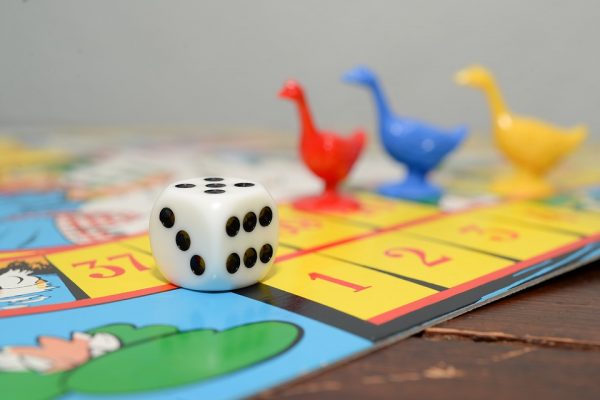
Stick to your routine
You can still celebrate New Year’s Eve with children without changing the time that your little ones go to bed. Bring forward the New Year’s celebrations a few hours if you have young children so that they keep to their sleep pattern. Stick to your usual bedtime routine (brushing teeth, reading a story, etc.), as these soothing rituals might help them calm down.
Feel free to carry on the celebrations by yourselves once they’re safely tucked in. So long as the music isn’t turned up too loud, there’s no reason why you can’t have a great time and relax for the evening!

Look back to move forward
New Year’s is a time of reflection, so use it as an opportunity to highlight the best memories of the year gone by. You could even put together a slide show of photos from the year and watch them together, or ask everyone their favourite memory and reminisce!
Ask your children if they have any goals for the year ahead- it’s never too early to start. This helps your children to understand that you care about them and their goals. You can also help them to set realistic targets and explore how you can help them achieve them!
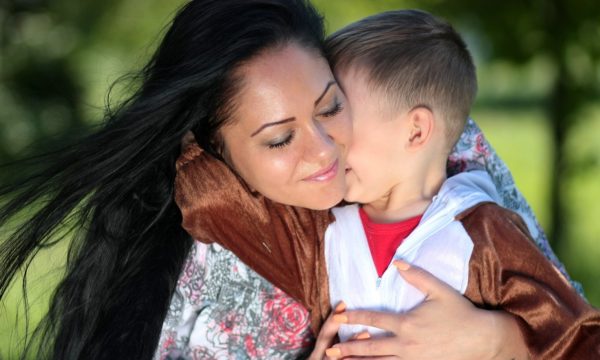
Don’t stress!
Any time spent with your family is special, and sometimes it’s hard just to make space for one another. So just relax and enjoy being together!
a
At Schoolhouse Daycare, we enjoy learning, encouraging confidence and we love life! If you think your child would enjoy life at Schoolhouse, then please do not hesitate to arrange a visit.
Need more help or advice? Find more from us here:
- 5 Healthy Habits to Adopt in the New Year
- How You Can Strengthen Family Relationships in the New Year
- Why it is Essential to Encourage a Growth Mindset in Your Children
- How to Build a Positive Parenting Connection
The post A handy guide to celebrating New Year’s Eve with children appeared first on Schoolhouse Day Care.
]]>The good news is that quality time with your children doesn’t have to be grand or complicated—it’s about making the most of the moments you have together. Here are some simple ways to connect with your kids and be more in the moment.
1. Be present
When we’re surrounded by notifications and screens, being fully present can feel like a challenge. So try your
The post Ways to Spend Quality Time with Your Children: How to Be More in the Moment appeared first on Schoolhouse Day Care.
]]>The good news is that quality time with your children doesn’t have to be grand or complicated—it’s about making the most of the moments you have together. Here are some simple ways to connect with your kids and be more in the moment.
1. Be present
When we’re surrounded by notifications and screens, being fully present can feel like a challenge. So try your best to put away the phone, turn off the TV, and really engage with your children, and show them that they matter. Try setting aside specific times of the day, like during meals or bedtime routines, to be device-free.
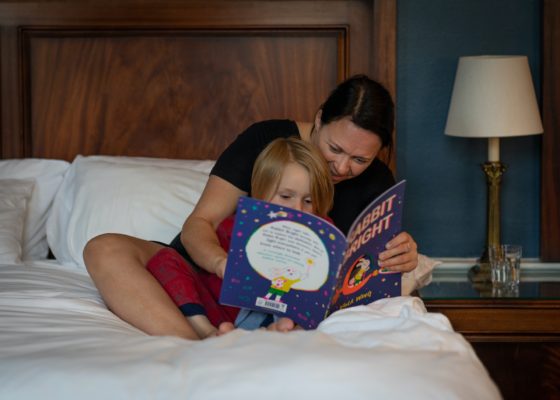
2. Create simple rituals and routines
Whether it’s reading a bedtime story, having a morning chat over breakfast, or a cosy Friday night movie together, these small routines help build a sense of connection and security. Not only that, but these little rituals will also become cherished moments that your child will remember long after they’ve grown up. They’re a simple yet effective way to make quality time with your children a regular part of your day.
3. Get active together
One of the best ways to spend quality time with your children is by getting active together. Go for a walk, play a sport, or even have a spontaneous dance party in the living room. Physical activities not only boost your mood and health but also provide a great opportunity to bond and have fun as a family.

4. Encourage play and creativity
Children learn and express themselves through play, so why not join in? Whether it’s building with LEGO, drawing, or engaging in imaginative games, let your child take the lead. This unstructured, creative time allows you to connect on their level and shows them that you value their interests.
5. Cook or bake together
Getting into the kitchen is another fantastic way to spend quality time with your children. Cooking or baking together is not only a fun activity but also a great opportunity to teach life skills, from measuring and mixing to patience and teamwork. Plus, there’s a tasty reward at the end! Whether you’re making a simple sandwich or baking cookies, the focus is on being together and enjoying each other’s company.
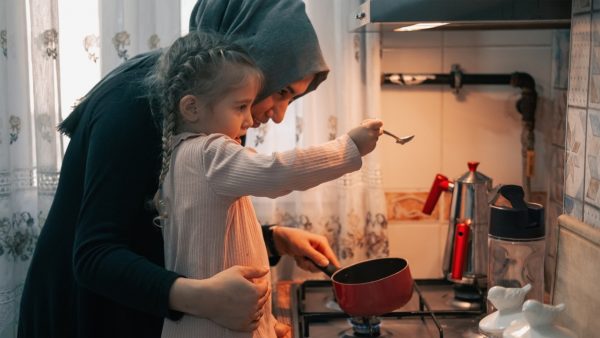
6. Have one-on-one time
If you have more than one child, it’s important to carve out individual time with each of them. One-on-one moments, whether it’s a special outing, a quiet chat before bed, or a quick trip to the park, allow you to connect more deeply.
7. Practice mindful parenting
Mindful parenting is about being aware, listening actively, and responding to your child with intention. It’s not about being perfect but about being present. Simple practices like taking a few deep breaths when you’re feeling overwhelmed or making gentle eye contact can help you stay connected during challenging moments.
8. Embrace the little moments
Remember, quality time with your children doesn’t always come from planned activities. Often, the most memorable moments are the little ones—cuddles on the sofa, a shared laugh over a silly joke, or simply sitting quietly together. Embrace these spontaneous moments and savour them.

Carve out quality time with your children
Spending quality time with your children isn’t about being perfect or doing everything right. It’s about being there, in the moment, creating small pockets of joy and connection. Whether it’s through simple routines, playful activities, or just being present, the time you spend together matters more than you might realise. So, take a breath, put away the distractions, and cherish these moments—they’re the ones that truly count.
At Schoolhouse Daycare, we enjoy learning, encouraging confidence and we love life! If you think your child would enjoy life at Schoolhouse, then please do not hesitate to arrange a visit.
Looking for more ideas and inspiration? See more from us here:
- How to Create One-on-One Time With Each of Your Children
- Parent and child vision board- set goals for 2025 as a family
- How to build joy, connection, and calm into your daily family life
- Encouraging Independence in Children: Rewards and Daily Routines to Help Children Be confident
The post Ways to Spend Quality Time with Your Children: How to Be More in the Moment appeared first on Schoolhouse Day Care.
]]>In this article, we’ll explore how crafting a vision board with your child can strengthen family bonds, improve communication, and set a positive tone for the year ahead.
The importance of family goal-setting
Setting goals as a family is crucial for creating a shared vision that builds unity and a sense of purpose. When every member contributes to the
The post Parent and child vision board: why set goals for 2025 as a family (and how!) appeared first on Schoolhouse Day Care.
]]>In this article, we’ll explore how crafting a vision board with your child can strengthen family bonds, improve communication, and set a positive tone for the year ahead.
The importance of family goal-setting
Setting goals as a family is crucial for creating a shared vision that builds unity and a sense of purpose. When every member contributes to the family’s aspirations, it reinforces the idea that each person’s input is valued.
Not only that, but involving your children in this process leads to many benefits!
- It not only teaches them responsibility but also nurtures their ability to set and achieve personal goals.
- They learn the importance of planning, perseverance, and celebrating successes, no matter how small.
- Setting goals together leads to a stronger, more cohesive unit.
- Goal-setting can improve communication and trust, creating a deeper connection between family members as they work together towards common objectives.

Introducing the vision board
A vision board is a visual representation of your goals, created by arranging images, words, and other creative elements on a board. It serves as a daily reminder of what you’re working towards, helping to reinforce positive thinking and motivation.
For a family, a vision board offers a unique opportunity to unite around shared dreams and aspirations. It’s a fun and meaningful activity that allows everyone to have a say in shaping the family’s future.
By engaging in this creative process together, families can bond, communicate openly, and stay focused on their collective goals for the year ahead.
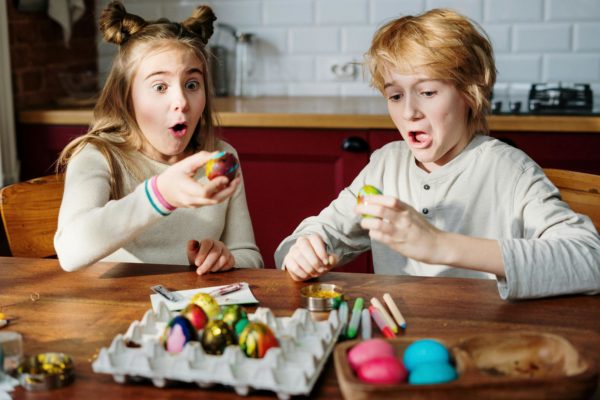
Steps to create a family vision board
Creating a family vision board is a wonderful way to bond while setting goals for the year ahead. Here’s how to get started:
1.. Gather supplies
Start by collecting materials like poster boards, magazines, markers, glue, and scissors. This is a fantastic opportunity to involve children in a hands-on, creative project that lets their imaginations run wild.
2. Discuss and set goals together
Sit down as a family and talk about your dreams and goals for 2025. Consider categories such as personal growth, family activities, health, education, and travel. Make sure everyone has a chance to share their ideas so that the vision board reflects the whole family’s aspirations.
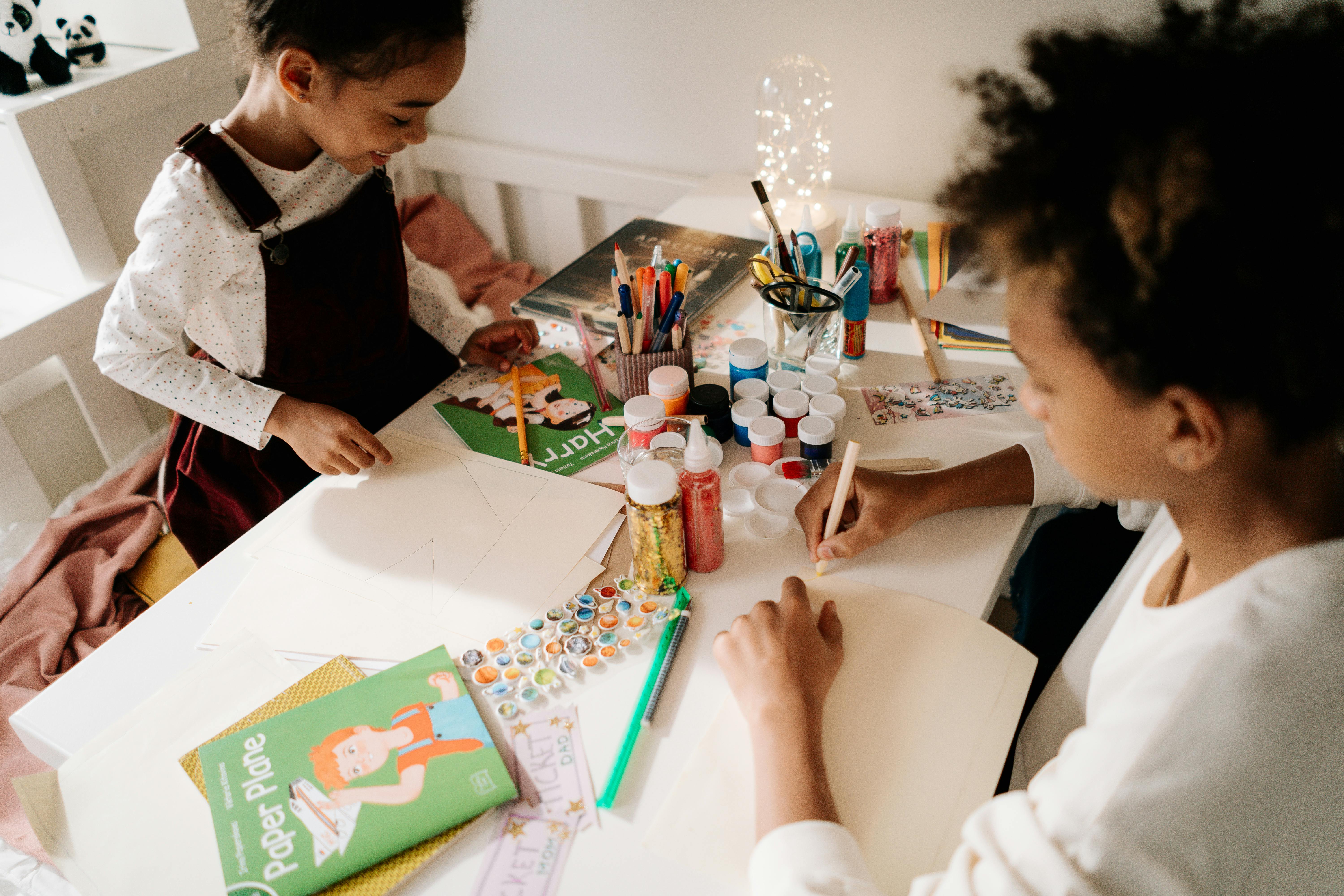
3. Create the vision board
Begin by selecting images, words, and phrases that represent your family’s goals. As you work together, encourage listening and collaboration, ensuring that everyone’s contributions are valued. This step is all about turning your collective dreams into a visual reality.
4. Display and reflect
Place your family vision board in a prominent location where it can serve as a daily reminder of your goals. Regularly check in on your progress, celebrate achievements, and make any adjustments as needed to stay on track throughout the year.

Creating a family vision board is a powerful way to stay connected, focused, and motivated as you work towards shared goals throughout the year. By making this a fun and meaningful annual tradition, you can strengthen family bonds and ensure everyone is on the same path towards success.
Start planning your vision board project today, and look forward to a happier, more cohesive family unit in 2025.
At Schoolhouse Daycare, we enjoy learning, encouraging confidence and we love life! If you think your child would enjoy life at Schoolhouse, then please do not hesitate to arrange a visit.
Looking for more ideas and inspiration? See more from us here:
- 5 Healthy Habits to Adopt in the New Year
- How You Can Strengthen Family Relationships in the New Year
- Encouraging Independence in Children: Rewards and Daily Routines to Help Children Be confident
- 8 Strategies for Promoting Well-Balanced Technology Use for Families
The post Parent and child vision board: why set goals for 2025 as a family (and how!) appeared first on Schoolhouse Day Care.
]]>a
Well, since one-on-one time is crucial for building strong relationships, boosting self-esteem, and improving communication, we want to help you carve out the time specifically for this. Here’s how you can create meaningful one-on-one time with each of your children – no matter how busy you are.
Understand the need
Every child craves undivided attention from their parents. Therefore, it’s essential to recognise the signs
The post How to Create One-on-One Time With Each of Your Children appeared first on Schoolhouse Day Care.
]]>a
Well, since one-on-one time is crucial for building strong relationships, boosting self-esteem, and improving communication, we want to help you carve out the time specifically for this. Here’s how you can create meaningful one-on-one time with each of your children – no matter how busy you are.
Understand the need
Every child craves undivided attention from their parents. Therefore, it’s essential to recognise the signs that your child needs some extra attention. These signs can include acting out, becoming unusually quiet, or seeking constant approval. By being attuned to these signals, you can better meet your child’s emotional needs and strengthen your bond. 
Choose quality over quantity
It’s not about how much time you spend, but how you spend it. For example, a focused, distraction-free 10 minutes can be more valuable than an hour of divided attention. Make those minutes count by being fully present.
Schedule daily time
Set aside a specific time each day for one-on-one interactions. Whether it’s 10 minutes in the morning or a bedtime chat, consistency is key. Tailor this time to fit both your schedule and your child’s preferences, ensuring it becomes a cherished routine.
Utilise spontaneous moments
Life is full of unexpected opportunities for one-on-one time. Use car rides, meal prep, or even waiting in line as moments to engage with your child. These impromptu interactions can be just as meaningful as planned activities.

Join their activities
Show interest in your child’s hobbies and activities. Whether it’s playing a video game, reading a book, or building a model, participating in their interests shows that you value their passions and enjoy spending time together.
Plan longer sessions
Monthly or quarterly ‘dates’ with each child can create lasting memories. Especially, if you let them help plan these outings to ensure they are engaging and enjoyable. These special times can become treasured traditions that your child looks forward to.
a
Tips for maximising one-on-one time
Engage positively: Keep the interactions positive and engaging. Praise good behaviour, celebrate achievements, and focus on having fun together.
Minimise interruptions: To make the most of your one-on-one time, try to keep your other children occupied with their own activities. This helps minimise interruptions and allows you to focus solely on the child you’re with.
Avoid distractions: Put away your phone and other digital devices. Showing that you are fully present and attentive reinforces the importance of the time you’re spending together.
Be consistent: Even on busy or challenging days, strive to maintain your one-on-one time. Consistency shows your child that they are a priority, no matter what else is happening.
Be flexibile: Life can be unpredictable, so be flexible. If you miss a scheduled time, make it up later. The goal is to maintain an overall balance of attention and care.

Creating one-on-one time with each of your children is not about grand gestures but about consistent, meaningful interactions. By incorporating these practices into your daily routine, you can strengthen your relationships, boost your child’s self-esteem, and foster open communication.
a
Remember, the goal is to create positive and lasting memories, and even small efforts can make a significant difference. Don’t worry if you can’t be perfect all the time; what matters is the overall effort and the love you share.
At Schoolhouse Daycare, we enjoy learning, encouraging confidence and we love life! If you think your child would enjoy life at Schoolhouse, then please do not hesitate to arrange a visit.
Looking for more ideas and inspiration? See more from us here:
- 5 Benefits of Sharing A Family Meal
- How to build joy, connection, and calm into your daily family life
- 8 Strategies for Promoting Well-Balanced Technology Use for Families
- 15 Time-Saving Tips For Busy Parents
The post How to Create One-on-One Time With Each of Your Children appeared first on Schoolhouse Day Care.
]]>However, for those who feel like the chaos sometimes outweighs the time for calm and connection, this blog is for you. Here are some practical ways to build joy, connection, and calm into your daily family life.
The power of joy
Joy is a powerful force in a child’s emotional and mental development. It creates lasting positive memories and helps build a resilient mindset. When children experience
The post How to build joy, connection, and calm into your daily family life appeared first on Schoolhouse Day Care.
]]>However, for those who feel like the chaos sometimes outweighs the time for calm and connection, this blog is for you. Here are some practical ways to build joy, connection, and calm into your daily family life.
The power of joy
Joy is a powerful force in a child’s emotional and mental development. It creates lasting positive memories and helps build a resilient mindset. When children experience joy, they’re more likely to feel confident, curious, and engaged with the world around them.
Tips for increasing joy
- Engage in playful activities: Whether it’s outdoor games, board games, or imaginative play, these activities allow children to express themselves and bond with you.
- Celebrate small wins: Celebrate your child’s small wins, be it a good grade, a new skill, or even a kind gesture. These celebrations don’t have to be extravagant—sometimes a high-five or a special dinner can make all the difference.
- Create traditions: Family traditions, no matter how simple, give children something to look forward to. It could be a weekly movie night, Sunday morning pancakes, or an annual camping trip. These traditions create a sense of continuity and belonging.
- Encourage hobbies and interests: Support your child’s passions, whether it’s drawing, football, reading, or dancing. By encouraging their interests, you help them find joy in their pursuits and build self-esteem.

Tips to strengthen your connection
- Practice active listening: Active listening means giving your child your full attention, showing empathy, and validating their feelings without judgment.
- Think quality time, not quantity: Spending undistracted time with your child is crucial. Engage in activities that promote bonding, such as cooking together, reading bedtime stories, or taking nature walks.
- Communicate openly: Encourage open and honest dialogue with your child. Create a safe space where they feel comfortable expressing their thoughts and feelings. Use age-appropriate communication techniques to ensure they understand and feel heard.
- Be physically affectionate: Never underestimate the power of a cuddle. Physical affection helps children feel secure and loved, strengthening their emotional bond.
- Use technology wisely: Balancing screen time with face-to-face interactions is essential. Use technology as a tool for connection—such as video calls with distant relatives—but also make time for tech-free family activities.
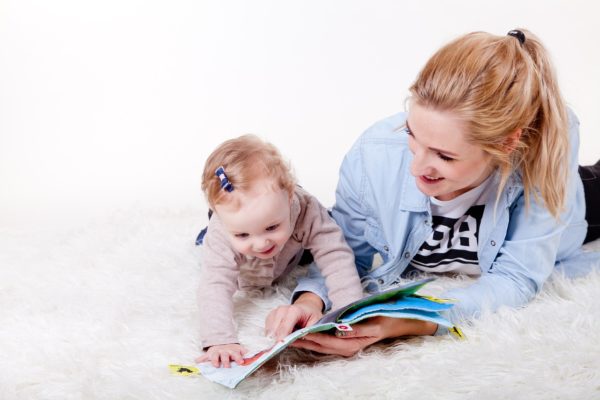
Creating a peaceful family environment
When parents model calm behaviour, it teaches children how to handle stress and challenges with composure. Here are four ways you can create a calm and peaceful family environment:
Routine and structure
A consistent daily routine provides predictability, reducing anxiety and creating a sense of safety for children. Knowing what to expect helps them feel more in control and less stressed.
Mindful parenting
Practising mindful parenting means staying present and composed, even in challenging situations. By modelling calm behaviour, you teach your children valuable coping skills.
Stress-reduction techniques
Incorporate stress-reducing activities into your family routine, such as yoga, deep breathing exercises, or quiet reading time. Creating a calming space at home, perhaps a cosy corner with soft lighting and books can also help. 
Handling conflicts calmly
Conflicts are inevitable, but handling them calmly can teach your child vital conflict-resolution skills. Approach disagreements with a calm and rational mindset, and encourage your child to express their feelings and work towards a solution together.
a
Bringing more joy, connection, and calm in your family life are essential steps towards a happier, healthier dynamic. These strategies benefit your child’s development, enhance your relationship, and create a loving, supportive environment. After all, parenting is about the journey, and with a bit of joy, connection, and calm, it can be the most rewarding adventure of all.
At Schoolhouse Daycare, we enjoy learning, encouraging confidence and we love life! If you think your child would enjoy life at Schoolhouse, then please do not hesitate to arrange a visit.
Looking for more ideas and inspiration? See more from us here:
- 5 Benefits of Sharing A Family Meal
- How to Create One-on-One Time With Each of Your Children
- 8 Strategies for Promoting Well-Balanced Technology Use for Families
- 15 Time-Saving Tips For Busy Parents
The post How to build joy, connection, and calm into your daily family life appeared first on Schoolhouse Day Care.
]]>Here are some practical ways to reduce stress, manage it better, and make sure you’re looking after yourself.
Recognise and address stress
First things first, you need to spot the signs of stress. Parental burnout might show up as feeling overwhelmed, anxious, irritable, or just plain exhausted, so when you
The post Parenting without burnout? How to manage stress and thrive appeared first on Schoolhouse Day Care.
]]>Here are some practical ways to reduce stress, manage it better, and make sure you’re looking after yourself.
Recognise and address stress
First things first, you need to spot the signs of stress. Parental burnout might show up as feeling overwhelmed, anxious, irritable, or just plain exhausted, so when you notice these red flags, it’s time to take action.
Little things like a brisk walk, a cuppa, or some deep breathing can work wonders to help you stay balanced and fend off burnout.

Stress management techniques to reduce parental burnout
- Deep breathing: When parental burnout hits, deep breathing can help calm your nervous system. Inhale slowly and deeply, then exhale just as slowly. Do this for a few minutes each day to keep stress at bay.
- Physical activity: Regular exercise reduces stress hormones and boosts endorphins, lifting your mood. Even short bursts of activity, like a quick jog or dancing with your kids, can make a big difference.
- Mindfulness and meditation: Practicing mindfulness or meditation helps you stay present and reduces anxiety. There are plenty of apps and online resources to guide you through these calming practices.
Self-care strategies
- Prioritise sleep: Getting enough sleep is crucial, especially since poor sleep can worsen stress and parental burnout. The solution? Create a calming bedtime routine and a restful sleep environment.
- Healthy diet: Eating a balanced diet can boost your energy levels and improve your mood. Make sure to include plenty of fruits, veggies, and whole grains in your meals.
- Set boundaries: Learn to say no and set boundaries to protect your time and energy. This might mean delegating tasks or asking for help from family and friends. Remember, it’s okay to prioritise your own needs to combat parental burnout.

Building a support system
- Seek social support: Sharing experiences and advice can provide emotional relief and practical tips, helping you manage parental burnout more effectively.
- Professional help: If stress becomes overwhelming, don’t hesitate to seek help from a counsellor or therapist. Professional guidance can offer strategies tailored to your situation, making it easier to cope.
- Family involvement: Get your family involved in your self-care routine. This includes co-parenting strategies where responsibilities are shared more equitably, easing the burden on you.
Incorporating positivity and play
- Focus on the positives: Celebrate small victories and enjoy quality time with your children to combat parental burnout.
- Problem-solving: When faced with challenges, break them down into smaller tasks and tackle them one at a time.
- Playtime: Play is a natural stress reliever and helps build a stronger parent-child bond, which can significantly reduce feelings of burnout.

Taking care of yourself is key!
Tackling parental burnout means recognising stress, using effective stress management techniques, practicing self-care, building a support system, and adding positivity and play into your daily routine.
Always remember, looking after yourself isn’t a luxury – it’s a necessity for being the best parent you can be.
At Schoolhouse Daycare, we enjoy learning, encouraging confidence and we love life! If you think your child would enjoy life at Schoolhouse, then please do not hesitate to arrange a visit.
Looking for more ideas and inspiration? See more from us here:
- How to Prioritise Self-Care as a Parent
- How Can a Busy Mum or Dad Practice Self-Care?
- 7 Tips for Meal Planning No Matter How Busy You Are
- Age Appropriate Chores for Children to Help Them Learn Valuable Life Skills
The post Parenting without burnout? How to manage stress and thrive appeared first on Schoolhouse Day Care.
]]>The importance of mindfulness
Mindfulness is all about being present and aware of your thoughts and feelings without distraction. For both children and adults, it can work wonders by reducing anxiety, boosting focus, and improving emotional control.
Yoga for children can be a fantastic way to introduce mindfulness. This activity not
The post Nurturing young minds with the power of yoga for children and adults appeared first on Schoolhouse Day Care.
]]>The importance of mindfulness
Mindfulness is all about being present and aware of your thoughts and feelings without distraction. For both children and adults, it can work wonders by reducing anxiety, boosting focus, and improving emotional control.
Yoga for children can be a fantastic way to introduce mindfulness. This activity not only helps children stay calm and focused but also supports their overall mental and emotional well-being.
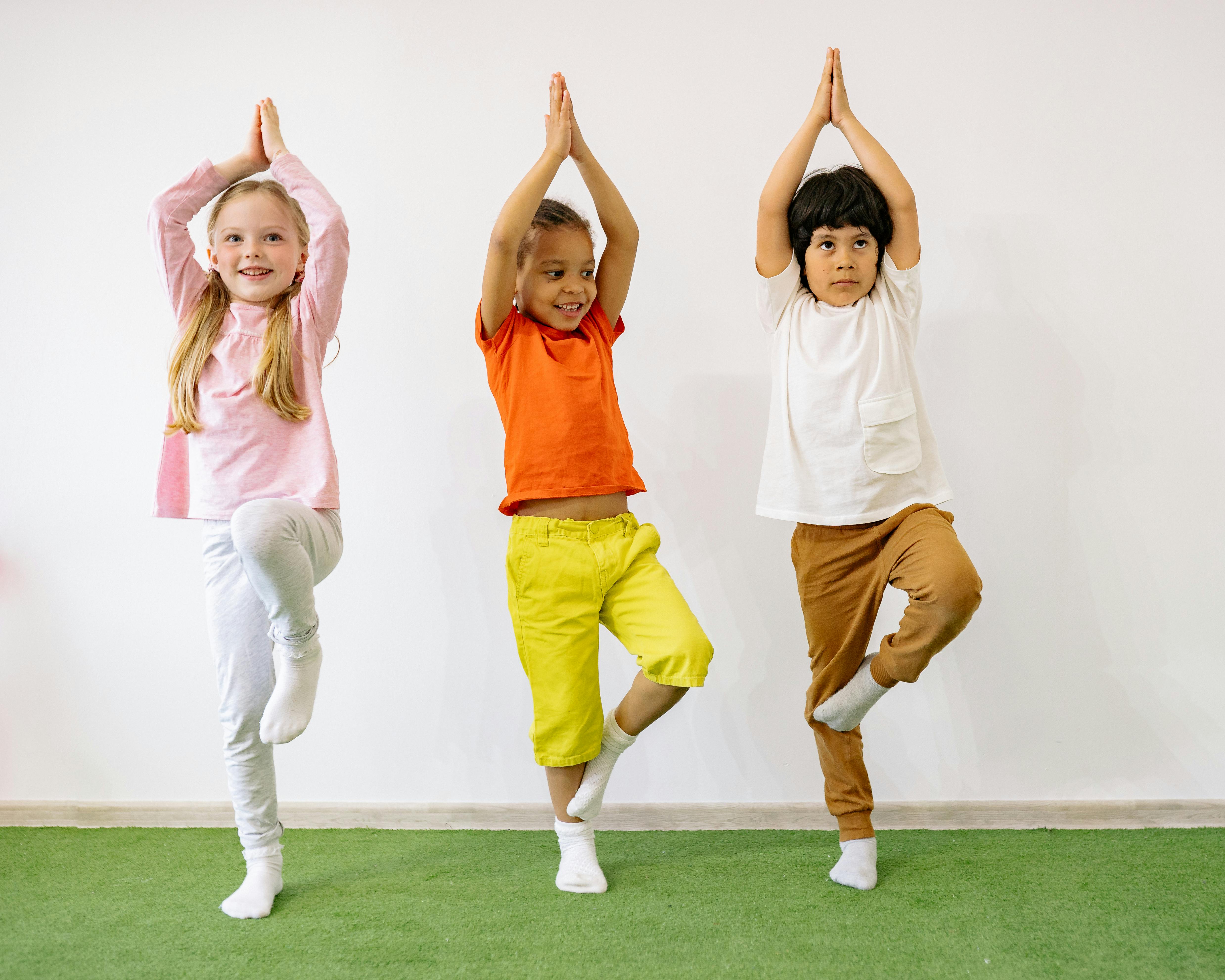
Yoga as a tool for mindfulness
Yoga is a fantastic way to promote mindfulness, combining physical postures, breathing exercises, and meditation. These elements work together to help children and adults focus on the present moment.
Specific techniques, like balance poses and visualisation through storytelling, make yoga for children engaging and effective. These activities not only enhance physical health but also teach children to stay calm and attentive, improving their overall mental well-being.
Benefits of mindfulness and yoga for children
Yoga and mindfulness help children:
- Manage their emotions, leading to better self-awareness and acceptance. This emotional regulation is crucial for their overall development.
- Concentrate and focus better, aiding their performance in everyday activities.
- Physically. Yoga enhances flexibility, strength, and coordination, supporting overall physical health.

Benefits of yoga and mindfulness for adults
Yoga and mindfulness aren’t just for our children, they can also benefit adults. Activities lead to:
- Stress reduction:
- Helps reduce stress levels
- Promotes relaxation and calmness
- Improved mental health:
- Reduces symptoms of depression
- Alleviates anxiety
- Physical wellbeing:
- Increases flexibility
- Builds strength
- Enhances overall fitness
Integrating yoga and mindfulness into daily life
For children, parents and educators can integrate yoga and mindfulness into daily routines through simple practices. For example:
- Starting the day with morning stretches that include yoga for children can set a positive tone.
- Mindfulness breaks during school help children stay focused and calm.
- Bedtime yoga helps them unwind and get ready for a good night’s sleep.

Adults can benefit too!
- Scheduling yoga sessions before or after work can relieve stress and promote relaxation.
- Mindfulness exercises during breaks keep you centred and calm.
- Short breathing exercises throughout the day help maintain a sense of tranquillity amidst the busyness.
Embracing mindfulness and yoga for a balanced life
Early Years Wellbeing Week is a perfect opportunity to embrace these practices and incorporate them into daily life. By doing so, we embrace a more balanced and harmonious lifestyle for ourselves and our children.
As Sharon Salzberg wisely said, “Mindfulness isn’t difficult, we just need to remember to do it.” Embracing yoga and mindfulness can pave the way for long-term wellbeing and a more fulfilling life!
At Schoolhouse Daycare, we enjoy learning, encouraging confidence and we love life! If you think your child would enjoy life at Schoolhouse, then please do not hesitate to arrange a visit.
Looking for more ideas and inspiration? See more from us here:
- How to Recognise if Your Child is Stressed and What to Do
- 12 Fun Learning Activities Your Kids Can Do at Home
- Nurturing Wellbeing and Emotions: How to Help Your Children Identify and Manage Their Feelings
- Why it is Essential to Encourage a Growth Mindset in Your Children
The post Nurturing young minds with the power of yoga for children and adults appeared first on Schoolhouse Day Care.
]]>Never heard of it? We’ve got all the information about Cynefin and its benefits for your children.
What is cynefin?
Cynefin is a Welsh concept that means more than just habitat; it signifies a deep sense of belonging, rootedness, and identity. Culturally, it plays an essential role in Wales, highlighting the importance of understanding one’s place in the world and connections to community and heritage. This sense of belonging and identity is crucial for creating a
The post “Cynefin” – Building a Sense of Belonging in Our Children appeared first on Schoolhouse Day Care.
]]>Never heard of it? We’ve got all the information about Cynefin and its benefits for your children.
What is cynefin?
Cynefin is a Welsh concept that means more than just habitat; it signifies a deep sense of belonging, rootedness, and identity. Culturally, it plays an essential role in Wales, highlighting the importance of understanding one’s place in the world and connections to community and heritage. This sense of belonging and identity is crucial for creating a cohesive and supportive community.
Cynefin in the new curriculum for Wales
The new curriculum aims to build a sense of belonging in children by incorporating Cynefin. It emphasises learning about local history, language, culture, and the environment, helping children understand and appreciate their heritage. By doing so, it strengthens their identity and connection to their community, promoting a well-rounded, inclusive education.

How does cynefin impact children?
1. Boosts self-esteem and social skills
Understanding and feeling a part of their Cynefin can have a profound impact on children’s development. It can:
- increase their self-esteem,
- enhance their social skills,
- and deepen their connection to their community.
When children feel a sense of belonging, they are more confident and better equipped to engage with the world around them.
2. Enhances cognitive and emotional development
Engaging with their cultural and historical context helps children develop critical thinking and problem-solving skills. Furthermore, it creates emotional resilience, as children who feel connected to their heritage and community often exhibit greater emotional stability. This comprehensive approach to learning supports not only their intellectual growth but also their emotional well-being, preparing them to navigate the world with confidence and a strong sense of identity.

How do schools promote cynefin
Day-to-day activities to help embrace cynefin could include:
- Storytelling sessions: Sharing local legends.
- School trips: Visiting historical sites.
- Welsh language lessons: Learning the language and traditions.
- Community projects: Participating in local events.
- Nature walks: Exploring local nature to connect with the environment.
- Art projects: Creating artwork inspired by local culture and history.
- Guest speakers: Inviting community members to share stories and experiences.
How can we help our children with cynefin?
You can explore local history together, participate in community events, and encourage your children to ask questions about their heritage. These activities help reinforce the sense of belonging and rootedness that Cynefin promotes.

Building a supportive environment
Creating a supportive and inclusive environment is essential both at daycare and at home. Therefore, collaboration between daycare staff and parents is key to reinforcing the sense of belonging in children.
By embracing Cynefin, we can help our children develop a strong sense of belonging and identity, fostering their overall development. Together, parents and daycare staff can create a supportive environment that nurtures confident and connected individuals.
At Schoolhouse Daycare, we enjoy learning, encouraging confidence and we love life! If you think your child would enjoy life at Schoolhouse, then please do not hesitate to arrange a visit.
Looking for more ideas and inspiration? See more from us here:
- Why is it important for a child to feel safe?
- Creating a Strong Foundation: Why Day Nurseries Are Essential for Early Learning
- How to Help Your Children Identify and Manage Their Feelings
- 5 Valuable Life Skills that Children Learn Through Age Appropriate Chores
The post “Cynefin” – Building a Sense of Belonging in Our Children appeared first on Schoolhouse Day Care.
]]>Since striking the right balance is crucial for our children (and our own sanity!), this article explores some practical strategies to ensure your family benefits from technology without being overwhelmed by it.
1. Understand the impact of technology
Technology offers great benefits, like educational resources, connectivity with loved ones, and endless entertainment. With the right apps, learning becomes engaging, and staying in touch
The post 8 Strategies for Promoting Well-Balanced Technology Use for Families appeared first on Schoolhouse Day Care.
]]>Since striking the right balance is crucial for our children (and our own sanity!), this article explores some practical strategies to ensure your family benefits from technology without being overwhelmed by it.
1. Understand the impact of technology
Technology offers great benefits, like educational resources, connectivity with loved ones, and endless entertainment. With the right apps, learning becomes engaging, and staying in touch is simpler than ever.
However, overuse can reduce face-to-face interactions, lead to dependency, and impact mental health. It’s crucial to be aware of these risks to prevent technology from disrupting family life.
Simple actions to take:
- Teach responsible and purposeful technology use.
- Explain which apps are beneficial and why.
- Guide thoughtful choices about screen time.

2. Establish family guidelines
One of the best ways to manage technology use for families is by creating a plan. This plan should outline clear boundaries for screen time and the type of content that is appropriate. Having these guidelines helps ensure everyone in the family is on the same page.
Make sure your rules are suitable for the ages of your children and flexible enough to accommodate different situations, like holidays or remote learning periods.
3. Use parental controls
Implement parental controls on devices to manage what your children can access. This helps ensure they are only exposed to age-appropriate content and it limits their screen time.
4. Encourage positive role modelling
Setting a good example as parents or guardians is key, so you need to be aware of your own usage of technology. For example, show your children how to balance tech use by putting devices away during meals and family time. This helps reinforce the idea that not all moments need to be captured or interrupted by screens.
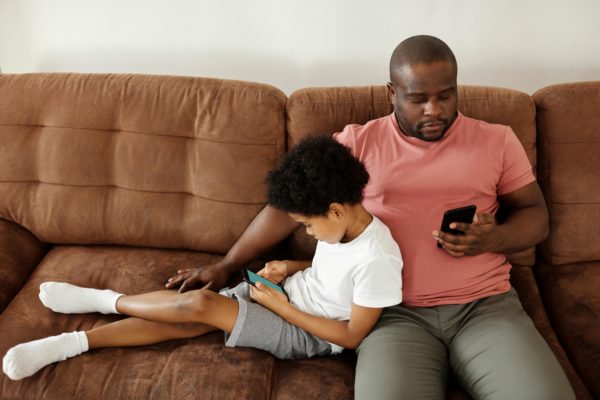
5. Practice open communication and education
Keep the conversation about technology ongoing. Talk openly about both the benefits and risks, making sure your children understand digital literacy and safety. This proactive approach helps them understand the digital world more confidently.
Our tip: Don’t wait for issues to arise! Discuss potential problems like cyberbullying and exposure to inappropriate content ahead of time. Equip your children with strategies to handle these situations, ensuring they feel safe and supported in their online interactions.
6. Promote offline activities
Encourage your family to engage in activities that don’t involve screens. Outdoor play, reading, and family board games are great alternatives to reduce technology use for families. These activities help build bonds and create memories without the need for technology.

7. Use technology purposefully
Make the most of technology by using educational apps and programs that enhance learning and creativity. These tools can make education fun and engaging, interactively providing valuable skills.
Another great use of technology is to stay connected with extended family and friends, especially when physical visits aren’t possible.
8. Regularly review and adjust
Regularly review and adjust your family’s technology use policies to keep them relevant. This ensures they meet your family’s changing needs and circumstances effectively.
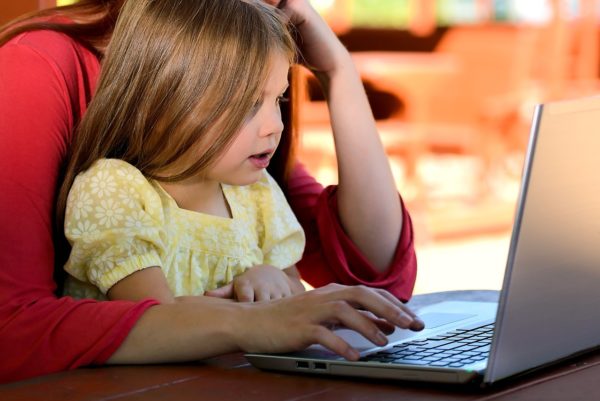
a
Balancing technology use for families is challenging – but trust us when we say that it is crucial for well-being. Not just for your children, but for the whole family and yourselves as well. If you implement these eight strategies that we’ve outlined above, you’ll soon see a happier, healthier, and more harmonious relationship with technology in your household. Not to mention, you’ll all spend so much more time with each other, making memories that last!
At Schoolhouse Daycare, we enjoy learning, encouraging confidence and we love life! If you think your child would enjoy life at Schoolhouse, then please do not hesitate to arrange a visit.
Looking for more ideas and inspiration? See more from us here:
- 9 Big Benefits of Reading to Your Child
- 12 Fun Learning Activities Your Kids Can Do at Home
- Age Appropriate Chores for Children to Help Them Learn Valuable Life Skills
- 5 Benefits of Sharing A Family Meal
The post 8 Strategies for Promoting Well-Balanced Technology Use for Families appeared first on Schoolhouse Day Care.
]]>Today, we’re exploring the core principles of gentle parenting, debunking some common myths, and sharing practical tips to help you create a loving and respectful family dynamic.
What is gentle parenting?
The gentle parenting approach is about nurturing and building strong, positive relationships rather than using traditional, authoritarian methods. It’s about understanding children’s feelings, treating them as individuals with their rights, and fostering their emotional growth.
Gentle parenting encourages open communication and mutual respect, creating a more
The post How the gentle parenting approach creates emotional intelligence appeared first on Schoolhouse Day Care.
]]>Today, we’re exploring the core principles of gentle parenting, debunking some common myths, and sharing practical tips to help you create a loving and respectful family dynamic.
What is gentle parenting?
The gentle parenting approach is about nurturing and building strong, positive relationships rather than using traditional, authoritarian methods. It’s about understanding children’s feelings, treating them as individuals with their rights, and fostering their emotional growth.
Gentle parenting encourages open communication and mutual respect, creating a more supportive and loving family environment.
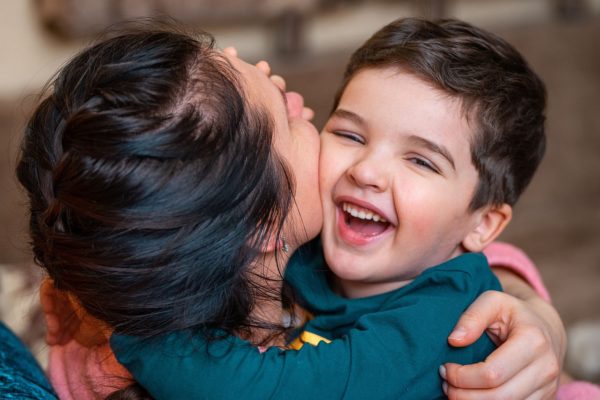
Core principles of gentle parenting
Empathy: Recognising and validating children’s emotions is crucial in gentle parenting. It involves active listening and emotional validation, showing children that their feelings matter.
Respect: Building a respectful relationship with your children is key; this means setting clear boundaries while maintaining mutual respect. It involves using respectful communication, such as listening to their views and speaking kindly.
Understanding: Creating a supportive and understanding environment is vital for children’s emotional growth. This requires patience and positive reinforcement, to help kids feel secure and valued. Techniques like considering their perspectives and addressing their needs thoughtfully encourage a deeper connection and better behaviour.

Common misconceptions about gentle parenting
You may think the gentle parenting approach only works with easy-going kids. In reality, it’s a structured, effective approach for all children. It involves setting boundaries and consistency, not just letting children do whatever they want.
Here are some examples of how to address behaviours with gentle parenting:
- A tantrum in a public place: Stay calm and respond empathetically. Offer choices to give your child a sense of control.
- Sibling rivalry: Resolve conflicts respectfully by promoting open communication and understanding each child’s perspective.
- Bedtime battles: Address fears and establish comforting routines to make bedtime smoother and more secure.
The pros and challenges of gentle parenting
Benefits
- The gentle parenting approach offers long-term emotional and social benefits for children, enhancing parent-child relationships and fostering self-discipline and emotional intelligence. It builds trust and security, leading to open, honest communication.
- Children learn to navigate challenges with support rather than fear by encouraging problem-solving skills and independence, reducing stress and anxiety.
- This approach also promotes strong emotional regulation skills, resulting in better behaviour and social interactions.
Overall, gentle parenting creates a nurturing, positive atmosphere that benefits the entire family.
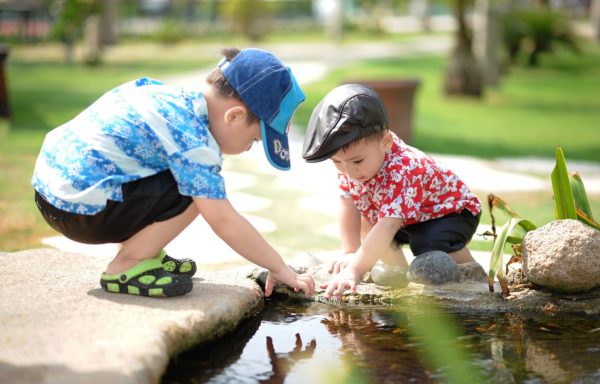
Challenges (and how to overcome them)
Adopting gentle parenting can come with its own set of challenges.
Parents often struggle with staying consistent and patient, especially when faced with public tantrums or sibling rivalry. Practical tips include setting clear, realistic expectations for yourself and your children, seeking support from like-minded communities, and practising self-care to maintain your own emotional balance.
Remember, the key is to stay consistent and patient. Embracing these challenges as learning opportunities can help you grow alongside your children, making the journey more rewarding.
a
Gentle parenting, with its emphasis on empathy, respect, and understanding, creates a nurturing and supportive environment for children. It helps build stronger parent-child relationships and fosters emotional intelligence and self-discipline.
At Schoolhouse Daycare, we enjoy learning, encouraging confidence and we love life! If you think your child would enjoy life at Schoolhouse, then please do not hesitate to arrange a visit.
Looking for more ideas and inspiration? See more from us here:
- Why is it important for a child to feel safe?
- Nurturing Wellbeing and Emotions: How to Help Your Children Identify and Manage Their Feelings
- How to Recognise if Your Child is Stressed and What to Do
- 5 Valuable Life Skills that Children Learn Through Age Appropriate Chores
The post How the gentle parenting approach creates emotional intelligence appeared first on Schoolhouse Day Care.
]]>